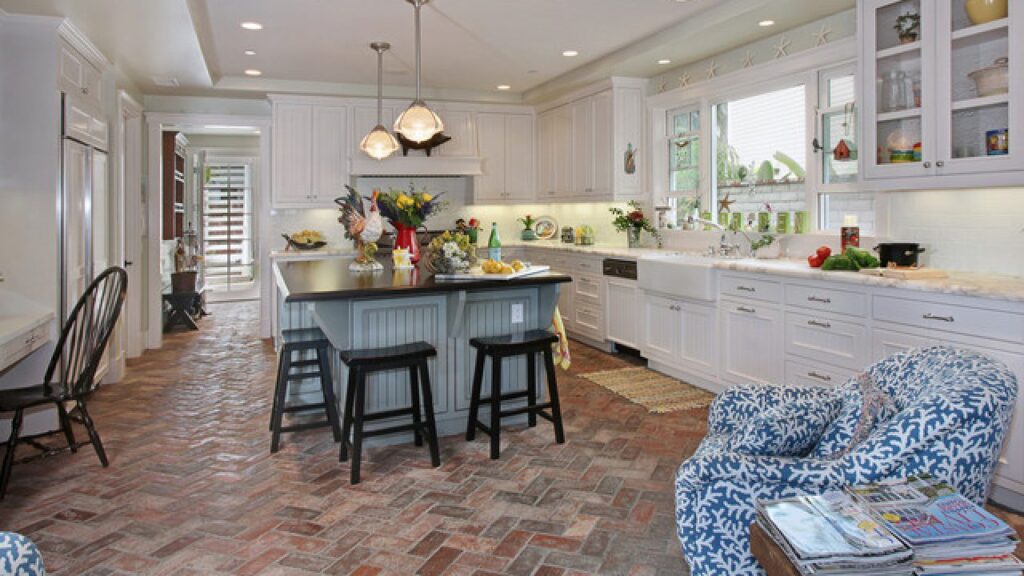Introduction
When it comes to modern home design, few tile patterns rival the elegance and versatility of herringbone tiles. Their zigzag layout has been around for centuries, but homeowners and designers continue to reinvent the look to fit contemporary interiors. Whether you’re considering herringbone tile flooring, a kitchen backsplash, or a stylish bathroom wall, this pattern adds texture, sophistication, and movement to any space.
In this guide, we’ll explore the history of herringbone, why it’s timeless, and how you can style it for a chic and contemporary feel. We’ll also share design tips, practical advice for installation, and maintenance tricks to keep your tiles looking stunning for years to come.
The History of Herringbone Tiles
The herringbone tile pattern dates back to ancient Roman roads, where it was used for its strength and stability. The interlocking zigzag structure ensured durability, even under heavy traffic. Over the centuries, the pattern found its way into wood flooring, textiles, and eventually interior design.
Today, herringbone has transcended its classical origins. It’s not just a symbol of tradition—it’s a go-to style in contemporary bathrooms, kitchens, and living spaces, proving that true design never goes out of fashion.
See more: 3 Seater Sofas: Stylish and Practical Choices for Every Home
Why Herringbone Tiles Are Timeless
So, why does the herringbone pattern endure in modern home design?
- Visual Movement – The zigzag layout creates flow and rhythm, making spaces feel dynamic.
- Versatility – Works with materials like ceramic, porcelain, marble, and natural stone.
- Adaptability – Looks equally at home in rustic, minimalist, industrial, or luxury spaces.
- Illusion of Space – Perfect for small rooms, as the pattern gives the impression of greater depth.
Styling Herringbone Tiles for a Contemporary Look
1. Go Bold with Color
While classic herringbone is often seen in whites and neutrals, contemporary design embraces bold shades. Think matte black tiles in a bathroom or deep navy herringbone tiles for a kitchen backsplash. Pair with sleek hardware and minimal décor for a dramatic effect.
2. Play with Scale
Large-format herringbone tiles give a modern twist to this age-old pattern. Oversized tiles work particularly well for herringbone tile flooring in open-plan living areas, adding a clean and spacious feel.

3. Contrast with Grout
If you want your herringbone pattern to stand out, use contrasting grout. White grout on dark tiles or charcoal grout on light ones emphasizes the design and adds a bold, graphic edge.
4. Minimalist Styling
For a softer approach, opt for neutral tones and seamless grout lines. Herringbone bathroom tiles in light grey or beige create a spa-like retreat that’s modern without being overwhelming.
5. Mix Materials
Modern design thrives on mixing textures. Try pairing glossy herringbone tiles with matte finishes, or natural stone with polished metals. A marble herringbone backsplash paired with matte black fixtures is a timeless yet contemporary choice.
Best Places to Use Herringbone Tiles
Herringbone Kitchen Tiles
Backsplashes, kitchen islands, and even full walls can benefit from herringbone. White subway tiles laid in herringbone with dark grout is a popular choice for a sleek, urban feel.
Herringbone Bathroom Tiles
From shower walls to vanity backsplashes, herringbone tiles bring a touch of elegance. Vertical herringbone layouts elongate walls, making ceilings appear higher.
Herringbone Tile Flooring
Perfect for hallways, living rooms, and entryways, herringbone flooring creates a sense of movement and luxury. Light-colored tiles can make smaller rooms feel bigger, while darker tones add drama.
Accent Walls
Want a statement feature? An accent wall in herringbone makes a striking focal point in bedrooms, living areas, or home offices.
Installation Tips for a Flawless Finish
- Plan Ahead – Herringbone requires precise measurements and careful planning before laying the first tile.
- Start from the Center – Begin at the room’s center or focal point to ensure symmetry.
- Use Spacers – Keep grout lines consistent for a polished finish.
- Hire a Pro – While DIY is possible, professional installation ensures a cleaner, more accurate result—especially for herringbone kitchen tiles and floors.
Maintenance Tips for Long-Lasting Style
- Regular Cleaning – Wipe down surfaces with a mild cleaner to prevent grime buildup.
- Seal Natural Stone – If using marble or stone, sealing protects against stains.
- Check Grout – Refresh grout lines when needed to keep the pattern looking crisp.
- Avoid Harsh Chemicals – Use pH-neutral cleaners to maintain tile finish and color.
Conclusion
Herringbone tiles are more than just a pattern—they’re a design statement that has stood the test of time. By experimenting with colors, grout, materials, and scale, you can transform this classic style into something that feels fresh and contemporary. Whether on floors, walls, kitchens, or bathrooms, herringbone tiles add sophistication and texture that elevate any space.
FAQs
Absolutely. Herringbone bathroom tiles bring sophistication while keeping the space contemporary. Choosing lighter tones like grey or beige creates a minimalist spa-like vibe, while darker tiles with contrasting grout add drama and luxury.
Yes. Herringbone kitchen tiles create visual movement, which helps kitchens appear larger. Light-colored tiles enhance the effect, while bold colors add character without overwhelming the space.
Herringbone works beautifully for both. Herringbone tile flooring adds elegance and flow, while walls and backsplashes benefit from the texture and pattern. Your choice depends on whether you want a subtle backdrop or a standout feature.
For a contemporary look, contrast grout with your tile color. For example, dark grout with white tiles emphasizes the zigzag, while matching grout creates a softer, seamless appearance.
Not at all. Routine cleaning with mild solutions keeps them looking sharp. If you use natural stone, occasional sealing helps protect the surface. Maintaining grout lines also ensures a polished and fresh appearance over time.

